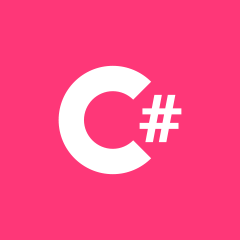Async-await:线程会一直运行到我的等待吗?
我一直认为如果我调用一个异步函数,线程就会开始执行这个异步函数,直到它看到一个等待。我认为它会向上调用堆栈查看调用者是否没有等待,而不是无所事事地等待。如果没有,则执行代码。
考虑以下(简化的)代码:
async Task<string> FetchCustomerNameAsync(int customerId)
{
// check if customerId is positive:
if (customerId <= 0) throw new ArgumentOutofRangeException(nameof(customerId);
// fetch the Customer and return the name:
Customer customer = await FetchCustomerAsync(customerId);
return customer.Name;
}
现在,如果我的异步函数FetchCustomerNameAsync(+1)不等待就调用会发生什么:
var myTask = FetchCustmerNameAsync(+1);
DoSomethingElse();
string customerName = await myTask;
FetchCustomerNameAsync, 以 +1 的参数值调用
FetchCustomerNameAsync检测到它customerId是阳性的,所以也不例外
FetchCustomerNameAsync 电话 FetchCustomerAsync
里面的某个地方FetchCustomerAsync是一个等待。发生这种情况时,线程会向上调用调用堆栈,直到其中一个调用者没有等待。
FetchCustomerNameAsync 正在等待,所以调用堆栈
我的功能还没有等待,继续 DoSomethingElse()
我的功能满足等待。
我的想法是,在满足我函数中的 await 之前,已经完成了对参数值的检查。
因此,以下应在 await 之前导致异常:
// call with invalid parameter; do not await
var myTask = FetchCustmerNameAsync(-1); // <-- note the minus 1!
Debug.Assert(false, "Exception expected");
我认为虽然我没有等待,但在Debug.Assert.
然而,在我的程序中,在 Debug.Assert为什么之前没有抛出异常?到底发生了什么?
 翻翻过去那场雪
翻翻过去那场雪3回答
-

繁星淼淼
异常仅在等待任务时传播您不能在不等待任务的情况下处理异常。异常仅在线程/任务内传播。因此,如果您不等待,异常只会停止任务。如果在您等待之前抛出异常,它将在您实际等待时传播。之前做所有的验证,然后做异步工作。所以,我建议你之前验证:ValidateId(id); // This will throw synchronously.Task<Customer> customer = FetchCustomerAsync(id).ConfigureAwait(false);DoSomethingElse();return await customer.Name;这是实现您想要的并行性的最佳方式。 -

慕莱坞森
您是对的,该线程执行异步函数直到它看到等待。事实上,你ArgumentOutofRangeException是由你调用的线程抛出的FetchCustmerNameAsync。即使它是同一个线程也不会得到异常的原因是因为当您await在函数内部使用时,AsyncStateMachine构建了 a 。它将所有代码转换为状态机,但重要的部分是它如何处理异常。看一看:这段代码:public void M() { var t = DoWork(1);}public async Task DoWork(int amount){ if(amount == 1) throw new ArgumentException(); await Task.Delay(1);}转换为(我跳过了不重要的部分):private void MoveNext(){ int num = <>1__state; try { TaskAwaiter awaiter; if (num != 0) { if (amount == 1) { throw new ArgumentException(); } awaiter = Task.Delay(1).GetAwaiter(); if (!awaiter.IsCompleted) { // Unimportant } } else { // Unimportant } } catch (Exception exception) { <>1__state = -2; <>t__builder.SetException(exception); // Add exception to the task. return; } <>1__state = -2; <>t__builder.SetResult();}如果你跟着<>t__builder.SetException(exception);( AsyncMethodBuilder.SetException),你会发现它最终会调用task.TrySetException(exception);which 将异常添加到任务的 中exceptionHolder,可以通过Task.Exception属性检索。 -

catspeake
一个简化的 MCVE : static async Task Main(string[] args) { try { // enable 1 of these calls var task = DoSomethingAsync(); // var task = DoSomethingTask(); Console.WriteLine("Still Ok"); await task; } catch (Exception ex) { Console.WriteLine(ex.Message); } } private static async Task DoSomethingAsync() { throw new NotImplementedException(); } private static Task DoSomethingTask() { throw new NotImplementedException(); return Task.CompletedTask; }当您调用 DoSomethingAsync 时,您将看到“Still Ok”消息。当您调用 DoSomethingTask 时,您将获得您期望的行为:WriteLine 之前的立即异常。
 随时随地看视频慕课网APP
随时随地看视频慕课网APP
相关分类



 C#
C#